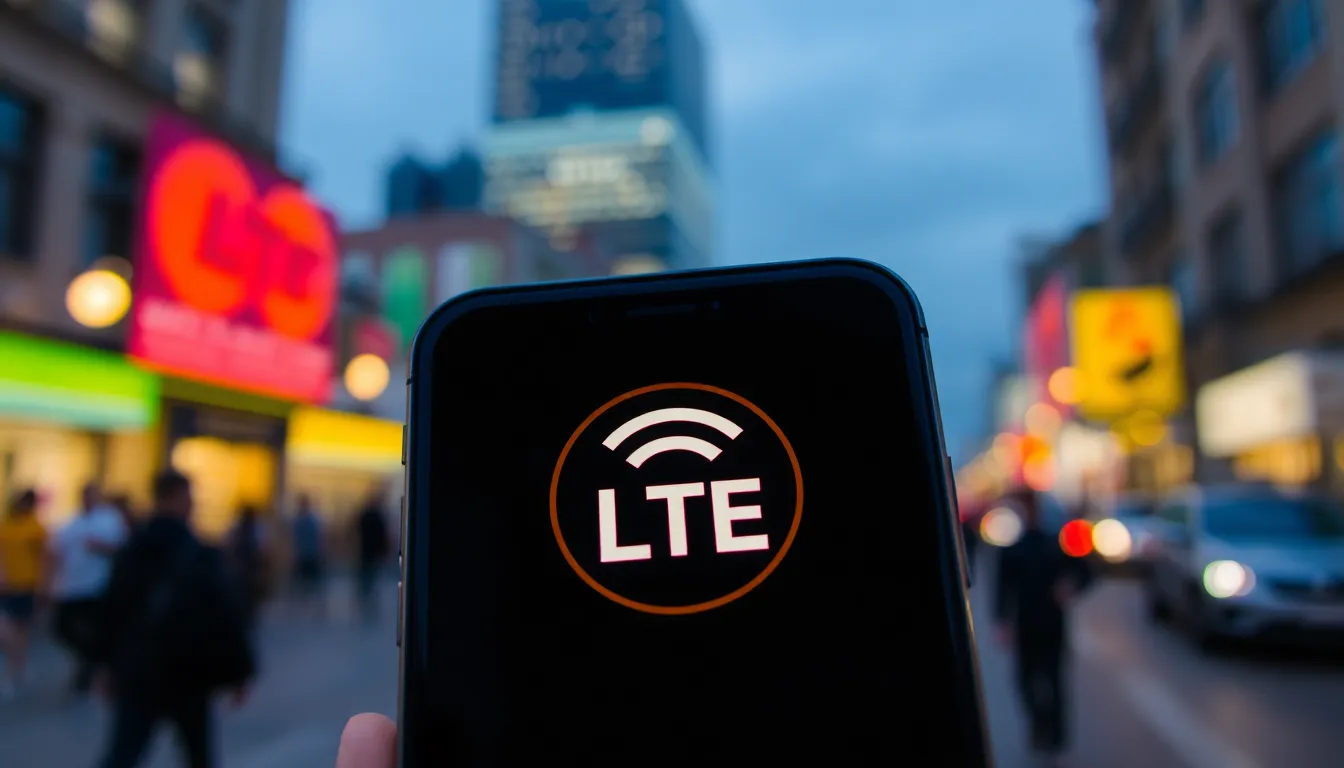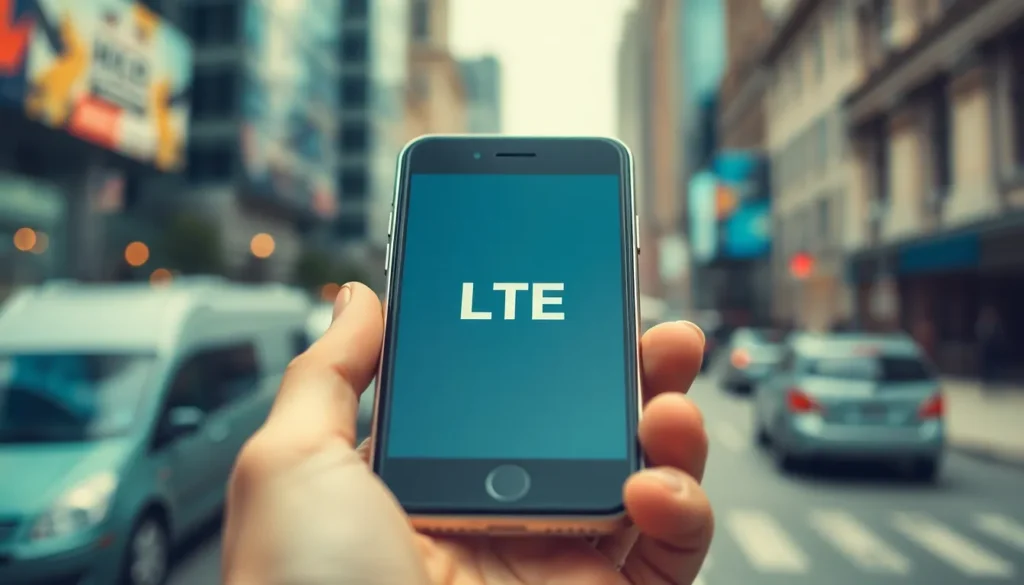Table of Contents
ToggleWhen you glance at your iPhone and see that shiny “LTE” icon, do you ever wonder what magic lies behind those three letters? It’s not just a fancy abbreviation; it’s the key to unlocking lightning-fast internet speeds that can make your browsing experience feel like you’re riding a digital rocket.
Imagine streaming your favorite shows, downloading apps, and scrolling through social media without the dreaded buffering wheel of doom. LTE, or Long-Term Evolution, is the superhero of mobile connectivity, swooping in to save the day with faster data transfer and improved network reliability. So, buckle up as we dive into the world of LTE and discover how it transforms your iPhone into a powerhouse of connectivity.
Understanding LTE Technology
LTE, or Long-Term Evolution, represents a significant advancement in mobile communication technology. It offers increased speeds and improved connectivity for iPhone users.
What Is LTE?
LTE stands for Long-Term Evolution, referring to the fourth generation of mobile telecommunications technology. This standard provides faster data transmission than previous generations, like 3G. Users experience enhanced internet speeds, which enable quick access to apps and content. Devices equipped with LTE can make calls, send texts, and browse the web simultaneously without interruptions. LTE utilizes various technologies, including orthogonal frequency-division multiple access (OFDMA), which improves overall efficiency and capacity.
Key Features of LTE
LTE boasts several key features that distinguish it from earlier technologies. High-speed data transfer allows users to stream videos seamlessly without buffering. Low latency supports real-time applications such as online gaming and video conferencing. Enhanced bandwidth enables multiple users to connect simultaneously without degrading network performance. Operators can deploy LTE in diverse frequencies, optimizing coverage and user experience. Additionally, LTE supports voice over LTE (VoLTE), allowing for clearer calls and faster call setup times.
LTE on iPhone Devices

LTE technology plays a crucial role in enhancing the overall experience of iPhone users. Users can enjoy significant improvements in browsing speed and connectivity quality.
How to Enable LTE on iPhone
To enable LTE on an iPhone, users should go to the Settings app. Selecting Cellular or Mobile Data is the next step. Within that menu, tapping Cellular Data Options leads to the Voice & Data section. Users can pick LTE from the available options for both data and voice services. Ensuring that the cellular plan supports LTE is important for functionality. Users might sometimes restart their devices for changes to take effect.
Benefits of Using LTE on iPhone
Experience benefits when using LTE, including faster data speeds. Streaming high-definition videos becomes seamless. App downloads complete quickly with LTE, enhancing user satisfaction. Enjoy smooth social media interactions without lag or buffering. Lower latency improves real-time communication experiences, making video calls clearer and less interrupted. High bandwidth accommodates more users simultaneously, ensuring consistent performance even in crowded areas.
Common Issues with LTE on iPhone
Several issues can arise with LTE connectivity on iPhones. Understanding these problems can enhance the user experience and improve performance.
Troubleshooting LTE Connectivity Problems
Resolving LTE connectivity issues often requires a systematic approach. First, users should check for network coverage in their area, as weak signals lead to poor connectivity. Restarting the device frequently resolves temporary glitches. Ensuring that the iPhone is updated with the latest software can also improve performance. In many cases, toggling the Airplane Mode on and off refreshes the network connection. Users are encouraged to verify their cellular plan for active LTE service. Finally, resetting network settings may solve persistent connectivity troubles.
Factors Affecting LTE Performance
Many factors influence LTE performance on iPhones. One primary factor is network congestion, where heavy data traffic can limit speed and accessibility. Distance from a cell tower also plays a crucial role; further distances typically result in weaker signals. Environmental obstacles like tall buildings and trees can impede signal strength. Additionally, device settings such as data-saving modes may affect overall performance. The quality of the user’s subscribed plan and service provider’s coverage can either enhance or hinder the LTE experience on the device.
Understanding LTE on iPhones is crucial for maximizing the device’s capabilities. With its ability to deliver high-speed internet and improved connectivity, LTE transforms how users interact with their favorite apps and content. By enabling LTE, iPhone users can enjoy a seamless experience whether they’re streaming videos or engaging in real-time communication.
Troubleshooting common LTE issues can further enhance performance and ensure a reliable connection. Awareness of factors affecting LTE performance allows users to make informed decisions about their cellular plans and settings. Embracing LTE technology ultimately leads to a more efficient and enjoyable mobile experience.




